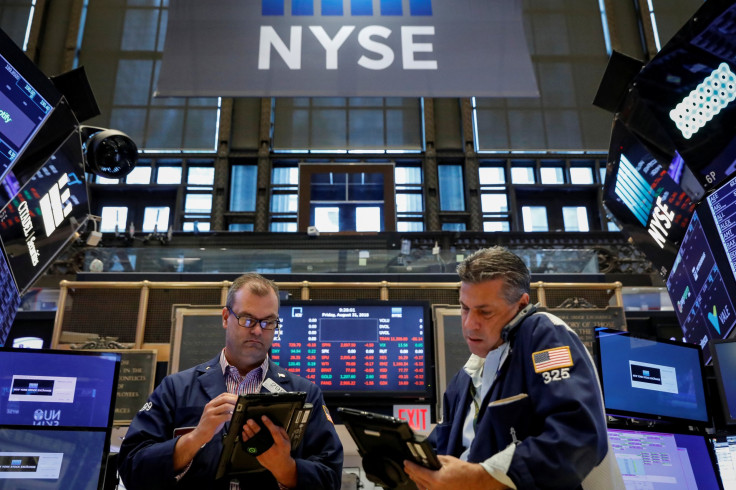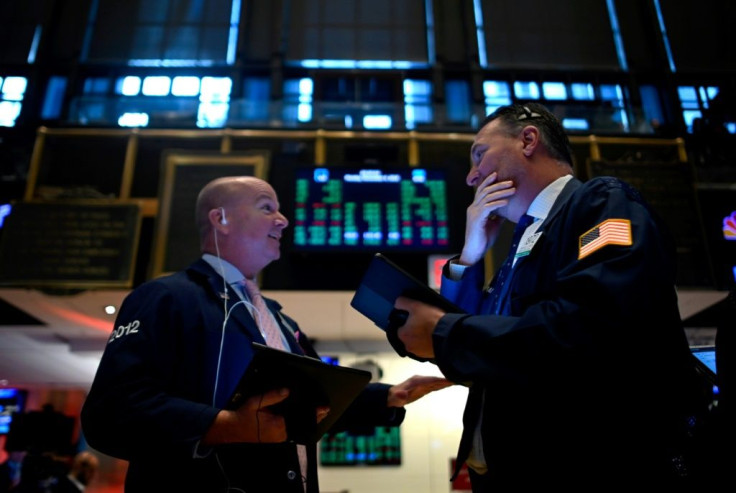New York Stock Exchange Trading Floor Shuts Down, Goes Digital Amid Coronavirus Outbreak

KEY POINTS
- The Big Board that's been a fixture of trading at the NYSE will go dark after the NYSE decided to go all-digital to protect the health of employees and traders
- A trader and an employee have tested positive for COVID-19
- This is the first time the physical trading floor of the Big Board has been shut independently while electronic trading continues
The New York Stock Exchange's (NYSE) switch to all-digital trading, albeit temporarily, isn't expected to have a huge downside on trading since the bulk of transactions now takes place electronically and away from the physical floor of the Big Board.
Going all-electronic and shutting down its historic trading floor was forced on the NYSE by the discovery a trader and an employee this week had tested positive for the coronavirus that causes COVID-19.
NYSE said all-electronic trading will begin March 23 (Monday) at the open. The facilities to be closed will be the NYSE equities trading floor and NYSE American Options trading floor in New York, and the NYSE Arca Options trading floor in San Francisco.
NYSE president Stacey Cunningham said the two infected men were detected by medical screenings at the Big Board. She said these men were not in the building this week. She also pointed out the building was cleaned prior to start of trading on Monday.
This is the first time the physical trading floor of the Big Board has been shut independently while electronic trading continues.
“We implemented a number a number of safety precautions over the past couple of weeks, and starting on Monday this week we started pre-emptive testing of employees and screening of anyone who came into the building,” said Cunningham said to CNBC. “If that screening warranted additional testing, we tested people and they were sent home and not given access to the building. A couple of those test cases have come back positive.”
As electronic trading grew in importance on Wall Street, the NYSE had more and more of its trading take place electronically and away from the physical floor. The change will affect the 30-stock Dow Jones Industrial Average and the benchmark S&P 500, which still relies on an army of traders working the floor to carry out transactions. The other major U.S. stock exchange, the NASDAQ Composite, does not have a physical trading floor and is 100% electronic.
More than 80% of trades at the NYSE takes place electronically, but the frenetic action on the floor of the stock exchange still serves its uses. Electronic trading is faster and makes anonymity possible. But there's more opportunity to improve the price of a share if it goes to the floor.
Through the years, NYSE said the floor still remains important, especially at the open and closing of trading. It's previously said the floor won't be shut down despite the dwindling number of actual traders.
The switch to all-digital comes at a time of turmoil for all three major indices. All three sank to historic lows Monday, rallied slightly Tuesday before plunging once again Wednesday due to investor fears the COVID-19 pandemic is hurtling the U.S. economy towards a recession by the end of June. A sharp drop in Wednesday futures presage another rout Thursday, which looks set to continue into Friday absent any staggeringly good news on the healthcare and political fronts.
On Wednesday, the Dow Jones Industrial Average nosedived1,338.46 points, or 6.3% to 19,898.92, its first close below 20,000 since February 2017. It sank more than 2,300 points earlier in the day. The benchmark S&P 500 dropped 5.2% at 2,398.42 and closed nearly 30% below a record it set on this February. It tumbled below 2,351, its closing low during the Christmas 2018 selloff. The NASDAQ Composite tumbled 4.7% to 6,989.84.
With Wednesday's selloff, the Dow erased all the gains it attained since Donald Trump became president in January 2017. Trump's stock market, whose sustained rise until late February was the centerpiece of his reelection campaign, is gone for good.
"The American economy is poised for the worst quarterly contraction ever, with a sudden slowdown in economic activity that's more akin to what happened in wartime Europe than during previous American slowdowns like the financial crisis more than a decade ago or even the Great Depression," wrote The New York Times Wednesday.

© Copyright IBTimes 2025. All rights reserved.





















